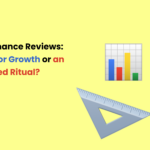Performance reviews are a staple in the corporate world, often met with mixed emotions. For some, they are an opportunity to showcase achievements and align future goals; for others, they are a stressful exercise in defending past performance. But why do companies conduct performance reviews, and how can they be transformed into a meaningful experience?
The Purpose of Performance Reviews
At their core, performance reviews aim to:
- Evaluate Employee Contributions: By assessing achievements against goals, companies can understand how individuals contribute to the overall mission.
- Provide Feedback: Constructive feedback helps employees grow and identify areas for improvement.
- Set Future Goals: Performance reviews are an opportunity to align individual objectives with company strategy.
- Decide Promotions or Raises: Reviews often influence decisions about career advancement and compensation.
However, the way these reviews are conducted can significantly affect their outcomes.

Challenges of Traditional Performance Reviews
- One-Sided Feedback: Many reviews focus on what managers think, leaving employees feeling unheard. This dynamic can lead to resentment or disengagement.
- Infrequency: Annual reviews often fail to address ongoing issues, making the feedback outdated or irrelevant. Employees benefit from regular touchpoints to adapt and improve.
- Bias: Unconscious bias or personal preferences can distort the evaluation process, leading to unfair appraisals.
- Stressful Atmosphere: The pressure of being evaluated can cause anxiety, limiting open conversations. Employees might focus more on defending themselves than engaging in meaningful dialogue.
Best Practices for Modern Performance Reviews
Companies striving for a modern approach to performance evaluations should focus on the following strategies:
1. Adopt Continuous Feedback
Regular check-ins replace the high-pressure annual review with ongoing discussions. This fosters a culture of transparency, where employees and managers can adjust strategies in real time.
2. Use Data-Driven Insights
Tracking performance metrics helps reduce bias and creates a fairer evaluation process. Objective data provides clarity and removes subjectivity.
3. Foster Two-Way Conversations
Encourage employees to share their feedback on management and the organization. This shifts the review from a critique to a collaborative discussion.
4. Focus on Development
Rather than solely evaluating past performance, emphasize growth opportunities. Identify skills to develop and provide resources for upskilling.
5. Train Managers
Equip managers with tools and techniques to conduct effective and empathetic reviews. This ensures the process is consistent and meaningful across teams.
Innovative Alternatives to Traditional Reviews
Some companies are rethinking the entire performance review structure. For instance:
- Peer Reviews: Gathering insights from colleagues who work closely with the employee.
- Self-Assessments: Allowing employees to reflect on their performance fosters self-awareness.
- Project-Based Reviews: Focusing on specific contributions rather than a general yearly overview.
- 360-Degree Feedback: Collecting input from multiple sources, including peers, subordinates, and clients.
The Employee Perspective
Employees value feedback when it’s actionable, fair, and growth-oriented. They’re more likely to engage in reviews that focus on career progression and recognize their unique strengths. Involving employees in the process fosters ownership and trust, making reviews less intimidating and more impactful.
Performance reviews are not inherently flawed, but their implementation often is. Companies that evolve their approach to focus on continuous feedback, mutual growth, and fairness can turn reviews into a cornerstone of organizational success.
Conclusion: Rethinking Performance Reviews
The key lies in embracing the idea that performance reviews are less about judgment and more about partnership—a chance for employees and companies to grow together.






